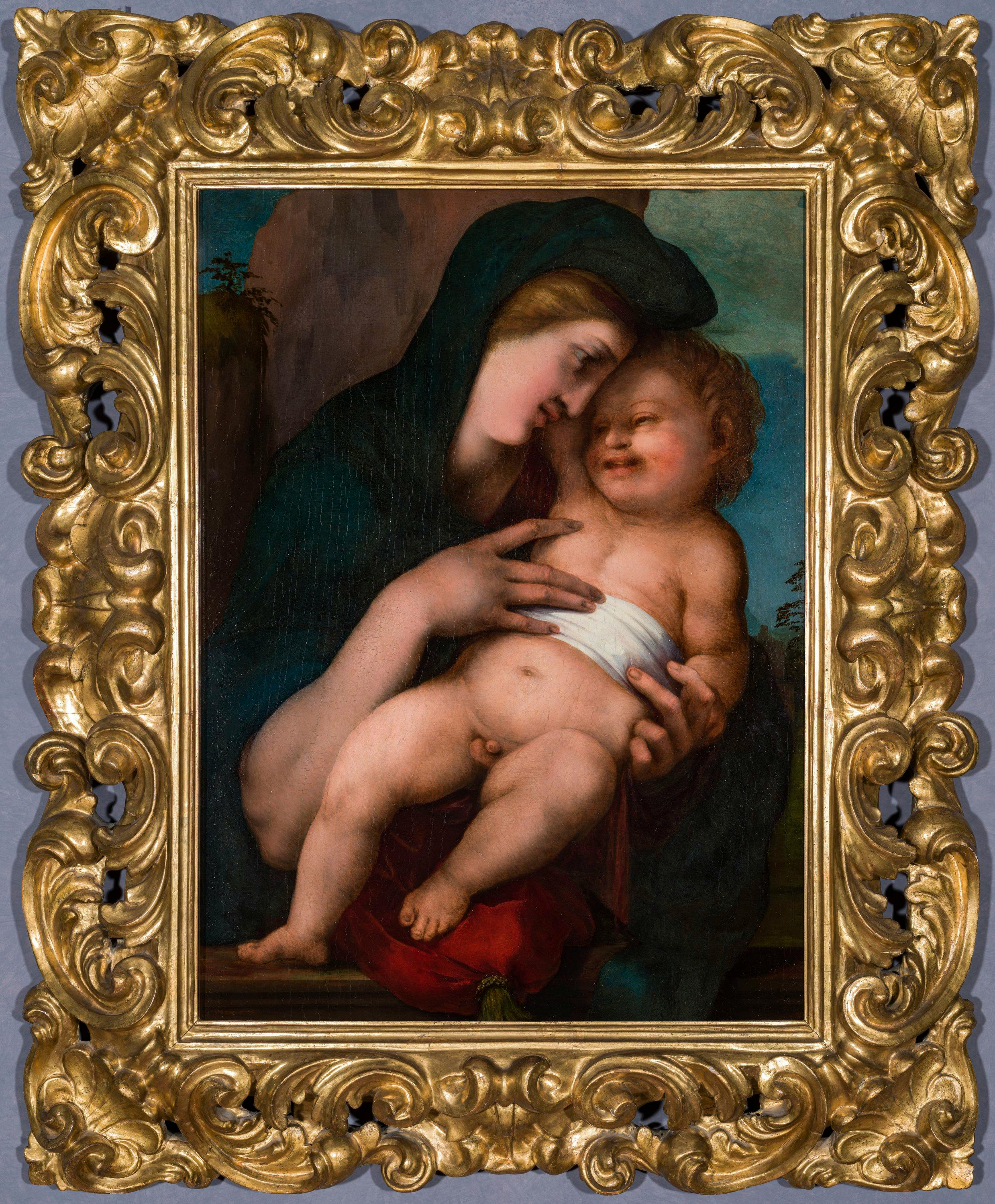Madonna and Child
Alonso Berruguete (Paredes de Nava 1488 ca. – Toledo 1561)
The Virgin and Child, in the foreground, embrace each other tenderly, exchanging glances and smiles. Behind them, there is a rocky wall, delimiting the left-hand side of the composition, leaving a spring landscape flowing in the distance, dotted with small trees and small reliefs, on the right. In terms of the compositional idea, the painter was inspired by a sculptural model: the Madonna and Child with cherubs' heads modelled in terracotta by Donatello around 1430-1440, today manifested in five other versions taken from it, varying in technique and dimensions, including the one in serena stone at the Bode-Museum in Berlin (Inv. n. 1.66) and another, formerly placed on the portal of the church of Santa Maria a Ughi, today found in the Bardini Museum in Florence (Inv. Bardini, no. 682). In Donatello's extraordinary mixture of inventions, in his way of representing the emotional tension between figures and the relationship between them and space, Berruguete and the generation of sculptors and painters working in Florence in the first decade of the 16th century found endless inspiration. Other than Donatello, sources of inspiration are identifiable both in the soft calibration of shadows and light, dependent on Leonardo's manner, and in the solid forms that evoke the Spaniard's contacts with Michelangelo's Florentine and Roman works. Alonso, in fact, belonged to the ranks of Iberian artists who, having arrived in Italy around the middle of the first decade of the 16th century, moved between the Rome of Julius II and Leo X - where the most important artistic texts of the century were being produced, Buonarroti's Sistine Chapel and Raphael Rooms - and republican Florence where Andrea del Sarto was active alongside Franciabigio, Granacci, Domenico Puligo, Giovan Francesco Rustici, Pietro Torrigiani, Baccio d'Agnolo and where Rosso Fiorentino and Pontormo took their first steps. The painting had been attributed to Andrea del Sarto and Rosso by twentieth-century critics before being attributed to Berruguete by Luisa Becherucci in 1953, based on an essay by Roberto Longhi, published in the same year, which emphasised the contribution of Alonso and Pedro Machuca, as "Spanish supporting actors" of the nascent modern style.
T. Mozzati, scheda in Norma e capriccio, spagnoli in Italia agli esordi della "maniera moderna" , Firenze, 2013
